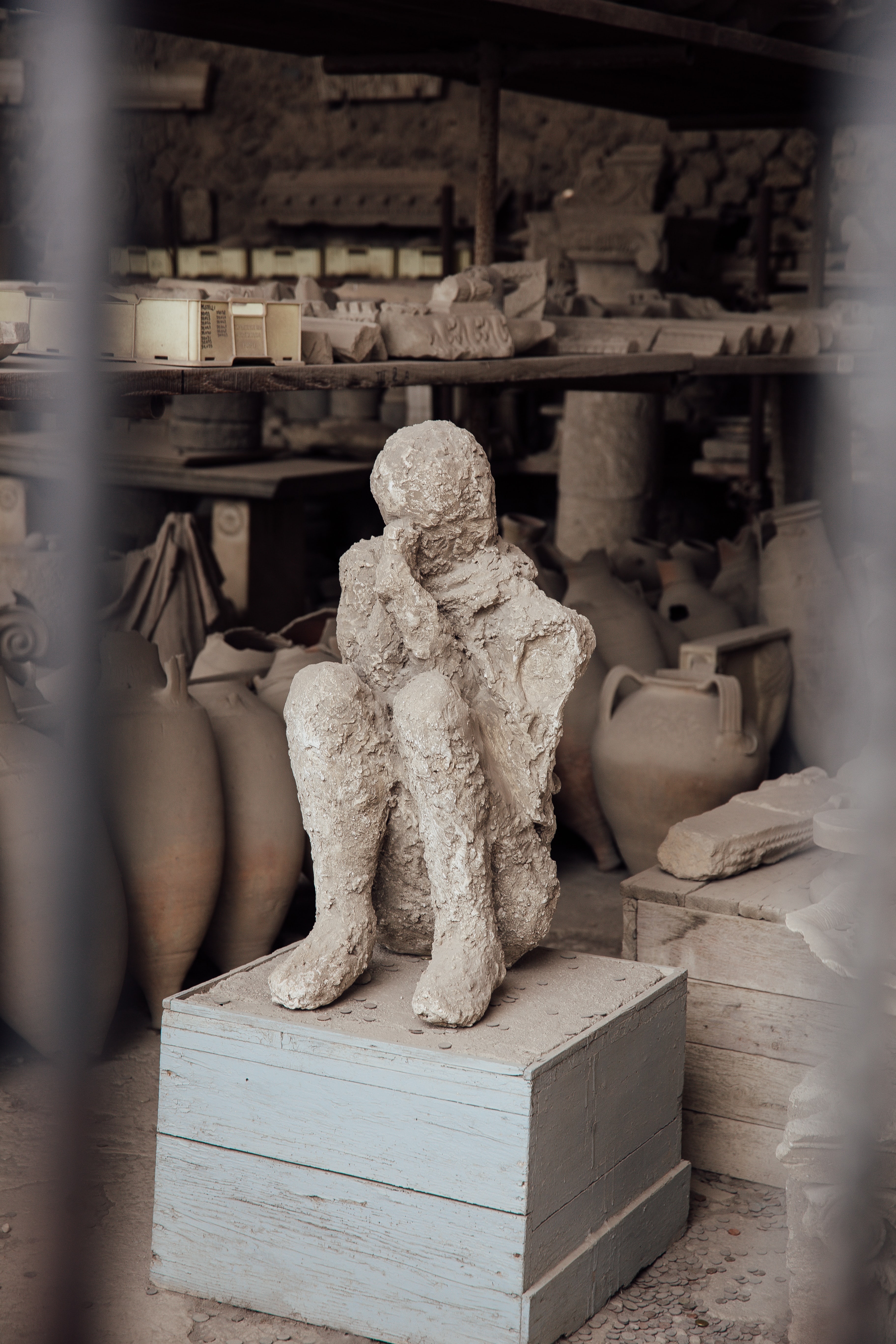
What to see in the ancient city of Pompeii in a single day
Check out our top tips on all there is to see and do when you visit the famed ruins of Pompei on tour.
Imagine if you could see a thriving Roman city from 2,000 years ago frozen in time. Pompeii is just that—well, more or less. Pompeii was destroyed in 79 A.D. when Mount Vesuvius erupted, but magma cooled and hardened which preserved objects and structures. The site is so massive that even though it was first uncovered in the mid-1700s, excavation still continues to this day.
Among impressively preserved frescos portraying ancient Greek gods and mythology, your local guide will show you other relics that give you a glimpse into what life was like in ancient Rome. “It was amazing to walk through Pompeii and see the ancient temples and houses,” said staffer Jamie. “Our guide pointed out that there are still grooves in the stone roads from the carts that drove over them thousands of years ago. There were even names carved into the stone walls. It was like stepping back in time.” Check out our top tips on all there is to see and do when you visit the famed ruins of Pompeii on tour.
House of the Vettii
Two freed men owned this house which was named after them. It is decorated with a number of wall frescos representing mythological scenes, nearly all of which have been preserved. Explore this site to get a glimpse of what a Roman home looked like during Pompeii’s final days.
House of the Faun
This is the city’s most lavish residence, which takes up almost 32,300 square feet and housed an elite family. As you explore it with your fellow travelers on tour, marvel at beautiful mosaics that cover the floors and a bronze statue of a dancing faun in the home’s atrium. Then admire the Alexander Mosaic, a reconstructed piece that depicts in stunning detail the Battle of Issus.

House of the Tragic Poet
Here you’ll find some of the highest quality frescos and mosaics in Pompeii, some of which showcase scenes from the Iliad. Not much is known about the family members who lived here and likely died when Mount Vesuvius erupted.
Villa dei Misteri
This villa (known in English as the Village of Mysteries) holds beautifully preserved ancient Roman frescoes. It’s an expansive space with a number of different rooms and is just a short walk from Pompeii’s main archeological site. Your Tour Director can tell you how to get there if you have free time at the end of your guided tour.

Santuario de Apollo
Dedicated to the Greek god, Apollo, this is one of the oldest places of worship in Pompeii and it’s the town’s most important religious structure. Inscriptions on a column outside the entrance read, “Know thyself,” “Nothing in excess,” and “Surety brings ruin.”

Temple of Isis
This temple was built during the reign of Augustus and served as a place to honor the Egyptian goddess, Isis. It’s built in the classical Egyptian style, and you’ll be able to see this site when you travel to Pompeii with us. Inside you’ll find reliefs of musicians and hieroglyphs.

Garden of the Fugitives
Once a vineyard and vegetable garden before Mount Vesuvius erupted, the Garden of the Fugitives has been replanted in order to mimic what the garden would have looked like in ancient Rome. It holds the casts of 13 victims of the eruption, including a merchant, a mother, children, a second family, and a servant. You’ll see many of these casts throughout Pompeii while on tour with us, all of which were made by pouring plaster into molds created from impressions left by bodies.

Amphitheater of Pompeii
When many people think of ancient Rome, one of the first images that comes to mind is a gladiator battle. The Amphitheater of Pompeii was able to hold a crowd of up to 20,000 people as they watched chariot races, animal hunts, and gladiator games. Here you’ll also find frescos of gladiators and inscriptions with the names of magistrates who had the arena built.
Have you visited Pompeii? What did you enjoy about visiting the ruins? Tell us on our Facebook page!




































































































